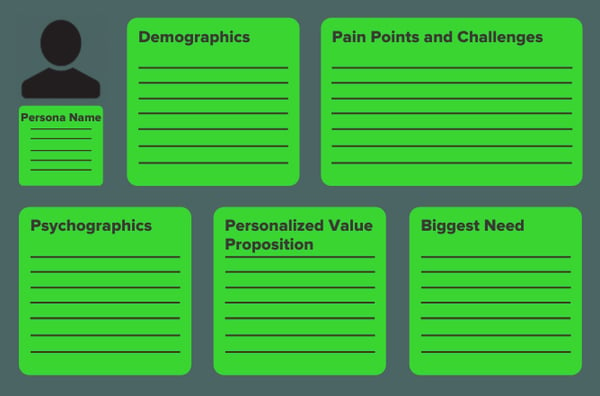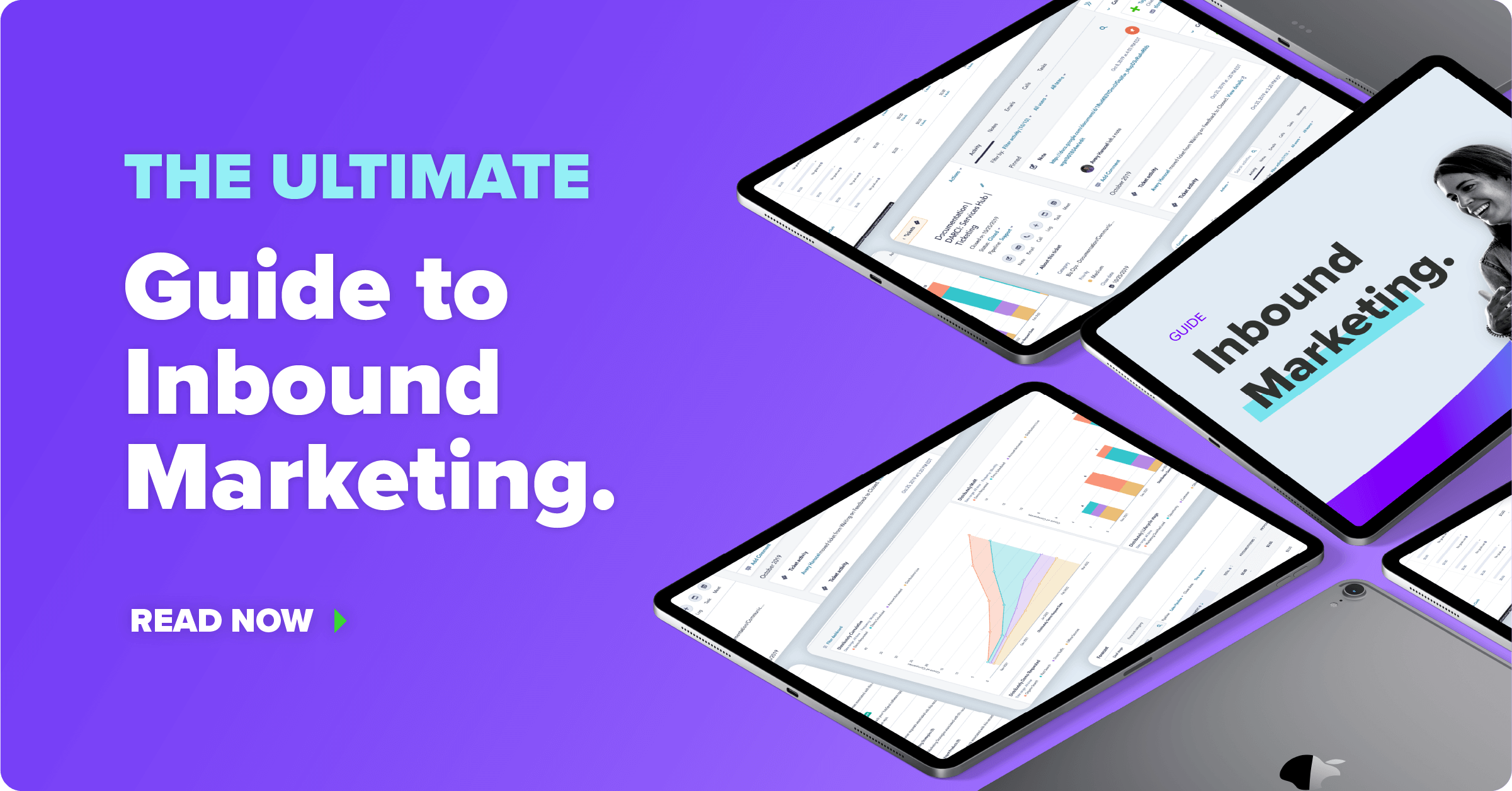What is a Buyer Persona?

Marketers these days seem to produce a near-infinite amount of content for consumers to engage with. From infographics on wine flavor profiles to videos on how to use Snapchat, there’s something (and more than enough!) for everyone. That’s why you have to be focused. To cut through the plethora of content available, both online in general and from your competitors, you have to target a specific audience. If you don’t, it will be difficult to stand out at all.
Buyer personas help you craft a marketing strategy that resonates with your intended audience. Rather than creating marketing materials for just anyone, you can document a specific set of people to focus on — those who you know will benefit from your product or service.
If your customer base is a bell curve, your buyer personas represent the customer groups in the center — they’re the types of people who you sell to most frequently and with the most success. They’re who you want to keep marketing and selling to.
What is a Buyer Persona?
A buyer persona is a semi-fictional representation of your ideal customer that’s created using psychographic, demographic and behavioral information. Each buyer persona contains information about that person’s responsibilities, goals, content consumption habits, buying triggers, pain points and how your company solves those pain points.
“The best way to think about buyer personas is to think about the two words,” says Senior Growth Strategist Nick Frigo. “You’ve got ‘persona’ which is a generalized representation of someone; a character. It’s someone that’s meant to embody different traits, but it’s not the real thing. But the ‘buyer’ word is the one that is more kind of flexible. A buyer can be someone who has bought. A buyer can be someone who is about to buy. A buyer can be someone who has no idea that they have to buy.”
Channel partners and champions can, and should, be represented by your buyer personas too, even though they’re not technically making the purchase. In fact, in many cases it’s more important to target the people who will champion your company throughout the buying process than it is to target the end buyer who approves the purchase financially.
Your Personas Should Be Influencers, Not Executives
Who are the stakeholders impacted by your product or service?
The word “buyer” tends to lead people to want their personas to represent the decision-makers who sign the contract. However, while a CFO might need to sign off on a purchase, they’re probably not the decision-maker (unless the tool is for their use personally). Instead, the decision-maker would be the department head or team lead that brought the purchase to the CFO for approval.
But, that team lead still might not be the person you want to target with your initial marketing. Your champion, and the person who should be reflected in your buyer persona, is the person who’s searching for a solution like yours to solve their challenges.
“If someone on the lowest end of the totem pole asks a senior strategist about a tool, that senior strategist brings it up to someone else — and that person goes to a decision-maker, people have a tendency to collapse all those handoffs into a single role. But each one of them has their own individual challenges,” Nick says. “People often assume they don’t need buy-in from those players, when most of the time, the people who are likely to find or hear about you first are those who have more time to look and are closer to combat.”
“The end-user is so influential, not only because they’re the person who’s more likely to find it online, but also because the product means nothing unless someone wants to use it,” adds Client Experience Lead Karin Krisher.
While roles like finance and IT should be taken into account in your strategy to create champion enablement material, they don’t come into play until it’s time for them to approve or block the sale. Before that can happen, you need to convince your champion that your company has a viable solution to their challenges.
“Everybody thinks IT is their persona because IT has to approve technology purchases, and they’re going to be involved. But they’re not the people looking for an answer, unless it’s an IT product. The people looking and finding products are in other business units, and then they just have to get the sign off from the CTO,” Karin says.
Your primary personas are the people you’re aiming to attract with your inbound marketing. Instead of using the signature on the final purchase to identify the buyer personas for your company, analyze the micro-moments leading up to that. Who found your website because they were searching for help? Who continuously engaged with your content as they progressed through the buyer’s journey? Who started the conversation with sales?
“Here’s the best way to find out who your influencer buyer persona is: Ask ‘whose day-to-day life sucks the most without your product?’” Nick says.
Buyer Persona vs. Ideal Customer Profile
Buyer personas represent the people you market and sell to. An ideal customer profile (ICP) represents the type of company those personas work at.
“A company profile can be layered on top of a persona,” Nick says. “In B2B, they are really connected to each other … but those two are not the same thing, even though they can look similar.”
It’s important to separate firmographic information into an ICP because multiple personas can work within the same company and have overlapping company-wide challenges while still looking to solve those challenges in different ways.
“The company profile is the round table where these people are all having a conversation about something. But those people have their own unique needs. They’re hopeful about different things. They’re afraid of different things. And, they’re all coming together to make a decision based on their unique needs and challenges,” says Nick.
The content that resonates with each persona will differ. If you treat all personas the same based on the fact that they work at the same company, you’re limiting your ability to convert more good-fit prospects.
Using Personas to Inform Strategy
In order to use your buyer personas to inform your content strategy and segmentation, you need to be able to definitively assign contacts to a single persona.
“I like to establish what the top-line segmentation is pretty early on in persona creation, because your personas shouldn’t be able to be each other unless they grow into each other,” Karin says. “Your persona lists should be full of different contacts, and no one contact should be on two persona lists — even if it takes four questions or four levels of segmentation to get there.”
As you’re creating personas, determine what question or characteristic (or combination of characteristics) differentiates them from one another.
For example, you can segment personas based on factors like goal, job title, challenge or pain point.
It’s also OK to have criteria about your buyer personas that you can’t validate.
“There’s a lot of psychographic stuff about these people that no CRM is going to be able to verify for you,” Nick says. “I think that personas are supposed to be people. You’re supposed to talk to them about more than their KPIs and company firmographics; about what scares or inspires them and how they’re measured. You’re not going to be able to validate those types of things, but if you’re a writer having a one-to-many conversation with people, you have to remember that they have these soft qualities that you can’t assume are the same in every person.”
The Takeaway
Your buyer personas exist in order to help you guide your marketing strategy. There’s no point in creating them if no one’s referencing them, and they’ll need to be updated and adjusted as you learn more information about your customer base.
Additionally, buyer personas aren’t meant for marketing use only. Gather input during the persona creation process from across your company, from marketing to sales, from your product or service team to your executives, in order to create a resource that can align your entire company around a shared understanding of who your best customers are.
Quinn Kanner
Quinn is a writer and copyeditor whose work ranges from journalism to travel writing to inbound marketing content.





